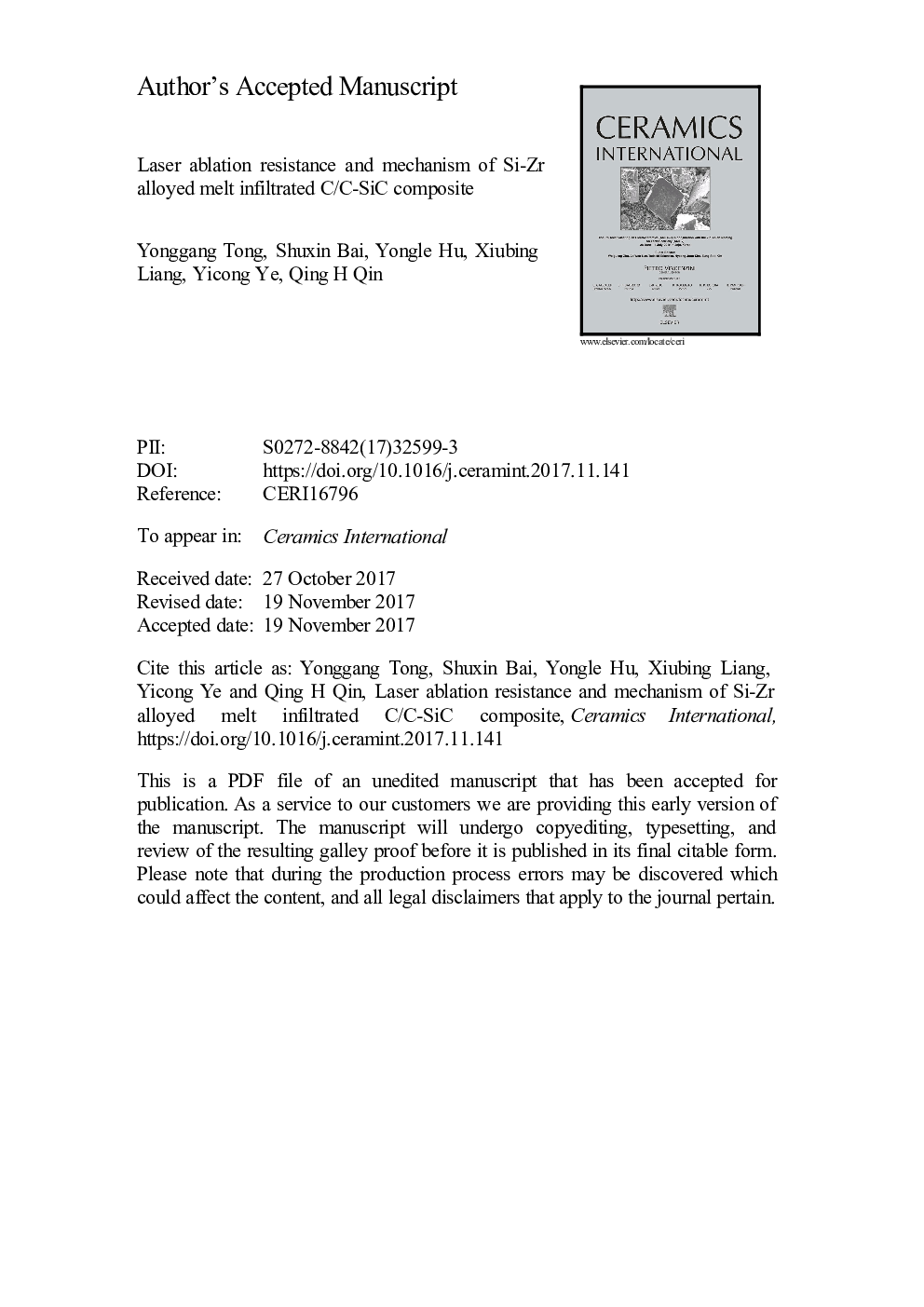| Article ID | Journal | Published Year | Pages | File Type |
|---|---|---|---|---|
| 7888139 | Ceramics International | 2018 | 26 Pages |
Abstract
Ablation resistance of C/C-SiC composite prepared via Si-Zr alloyed reactive melt infiltration was evaluated using a facile and economical laser ablation method. Linear ablation rates of the composite increased with an increase in laser power densities and decreased with extended ablation time. The C/C-SiC composite prepared via Si-Zr alloyed melt infiltration presented much better ablation resistance compared with the C/SiC composite prepared by polymer infiltration and pyrolysis process. The good ablation resistance of the composite was attributed to the melted ZrC layer formed at the ablation center region. Microstructure and phase composition of different ablated region were investigated by SEM and EDS, and a laser ablation model was finally proposed based on the testing results and microstructure characterization. Laser ablation of the composite experienced three distinct periods. At the very beginning, the laser ablation was dominated by the oxidation process. Then for the second period, the laser ablation was dominated by the evaporation, decomposition and sublimation process. With the further ablation of the composite, chemical stable ZrC was formed on the ablated surface and the laser ablation was synergistically controlled by the scouring away of ZrC melts and evaporation, decomposition and sublimation process.
Related Topics
Physical Sciences and Engineering
Materials Science
Ceramics and Composites
Authors
Yonggang Tong, Shuxin Bai, Yongle Hu, Xiubing Liang, Yicong Ye, Qing H. Qin,
